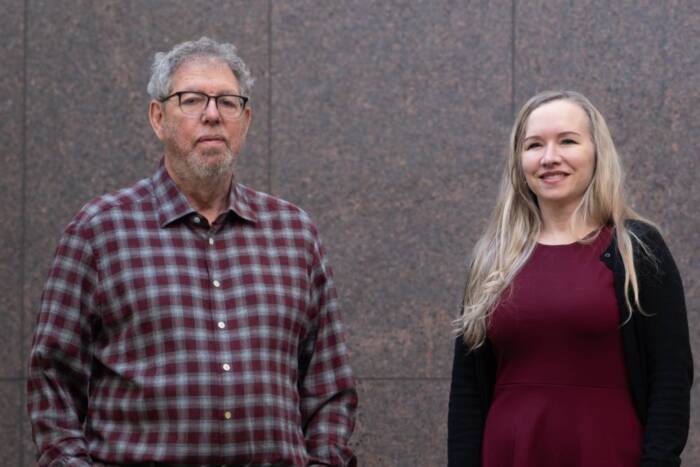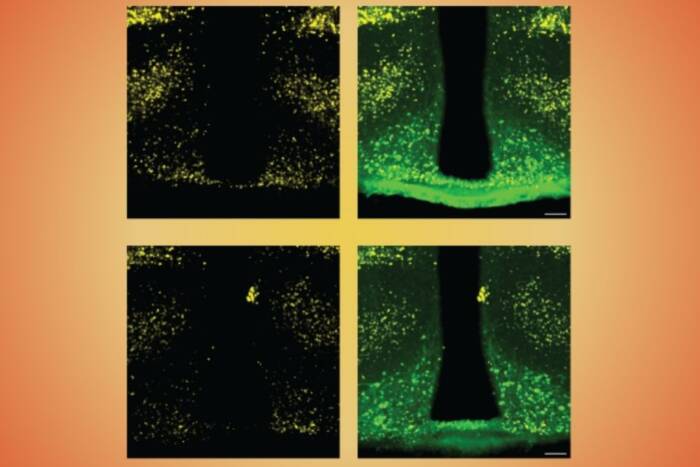New faculty member studies evolution of social behavior in insects
A scientist who uses the tools of molecular genetics to study the social evolution of insects has been appointed assistant professor at Rockefeller University. Daniel Kronauer will join Rockefeller in July 2011 as head of the Laboratory of Insect Social Evolution, the third and latest recruit in the university’s fall 2009 open faculty search.
Kronauer is interested in understanding how evolution operates at different levels of organization in the rich context of insect societies, from the gene to the individual and society as a whole. Insect societies are often integrated to such a degree that they are conceptualized as “superorganisms,” where individuals are morphologically and behaviorally differentiated into castes with different functions, analogous to different tissues in conventional organisms. Kronauer uses an integrative approach combining genomics and transcriptomics, population genetics, molecular phylogenetics, chemical ecology, laboratory-based behavioral experiments and fieldwork to explore how natural selection has shaped these social systems at different hierarchical levels.
“The study of social insects brings an extra layer to the understanding of evolution,” says Kronauer. “It adds the dimension of the society. As the societies get more and more complex, you have to understand how these different hierarchical levels are interacting with one another. Cooperation has to be maintained, and conflicts have to be resolved or suppressed, and understanding that is one of my major interests.”
In the lab, Kronauer primarily works with Cerapachys biroi, an ant species that is attractive as an experimental system because its populations exhibit the interesting social behavior of army ants but reproduce asexually, providing control over the genetic background. Kronauer will sequence the genome and transcriptome of the species to establish this ant as a model system in which he can study behaviors such as reproduction and foraging.
“Using C. biroi as a model system is like opening up a giant playground for me, because nobody has really used molecular genetics to study army ant behavior before,” Kronauer says.
Presently, Kronauer is using C. biroi to study the molecular mechanisms and genomic consequences of a particular form of asexual reproduction known as thelytokous parthenogenesis, where unfertilized eggs develop into female offspring. Colonies of parthenogenetic social insects are normally not subject to competition between different genetic subgroups because all individuals are genetically identical. They can, however, come into conflict if uncontrolled reproduction creates colony-level costs, for instance, or if one lineage in a colony of mixed genetic lines monopolizes reproduction. Kronauer also wants to understand how these conflicts arise and how they are managed.
C. biroi is likely a native of Southeast Asia, but like the pestilent fire ant, it is an invasive species. It has been inadvertently introduced to many tropical and subtropical islands such as Okinawa, Hawaii, Mauritius and the Antilles over the last hundred years. Kronauer plans to reconstruct the invasion history of C. biroi using genome-wide genetic markers in hopes of understanding why certain ant species become invasive and how they are spread by humans.
Kronauer also studies nomadic species of army ants in the field, ranging from the New World tropics of Venezuela to Kenya in Africa, where he tracks colonies, some of which move as much as 100 meters each night. Previous work has shown that army ant colonies have very complex pedigree structures and an idiosyncratic way of reproducing by fission. He hopes to understand how and why this system has evolved and how it has shaped altruistic worker behavior and social conflicts in evolutionary terms. He is also interested in the evolution of morphological and behavioral worker castes, particularly in response to ecological changes, as well as ant symbionts including microbes and arthropods.
He was the first to develop and use population genetic markers for a broad range of army ant species, and his research showed that many of the most complex insect societies, like those of army ants, rely on high genetic diversity. In army ants this is typically achieved by single queens that mate with an extraordinary number of males, a finding Kronauer published in 2007 in Evolution, or, in one special case, by colonies that host multiple queens, published the same year in Current Biology.
Kronauer is originally from Germany, where his interest in insects took root by the age of six, when he began keeping colonies of bumblebees at home. He received his Ph.D. at the University of Copenhagen in 2007 and was a postdoc there as well as at the University of Lausanne before joining Harvard University as a junior fellow in July 2008.
“Daniel is an outstanding scientist, bringing a molecular perspective to the fascinating behaviors of social insects, including the regulation of reproduction and foraging,” says Paul Nurse, the university’s president. “His work will provide new insight into the evolution of social behaviors in insects, but may also teach us something about humans, which, despite many differences, share several fundamental features such as sophisticated communication, division of labor, communal architecture, and conflicts of interest that can jeopardize social cohesion.”
Kronauer also is an avid nature photographer, shooting ants in the field. His close-up images of ants have appeared on the covers of journals such as Current Biology, Evolution, and The Journal of Evolutionary Biology. “It’s a hobby, a nice complement to the scientific work I’m doing. It’s a way to access the world of the ants and discover things you couldn’t see with your eyes alone.”



